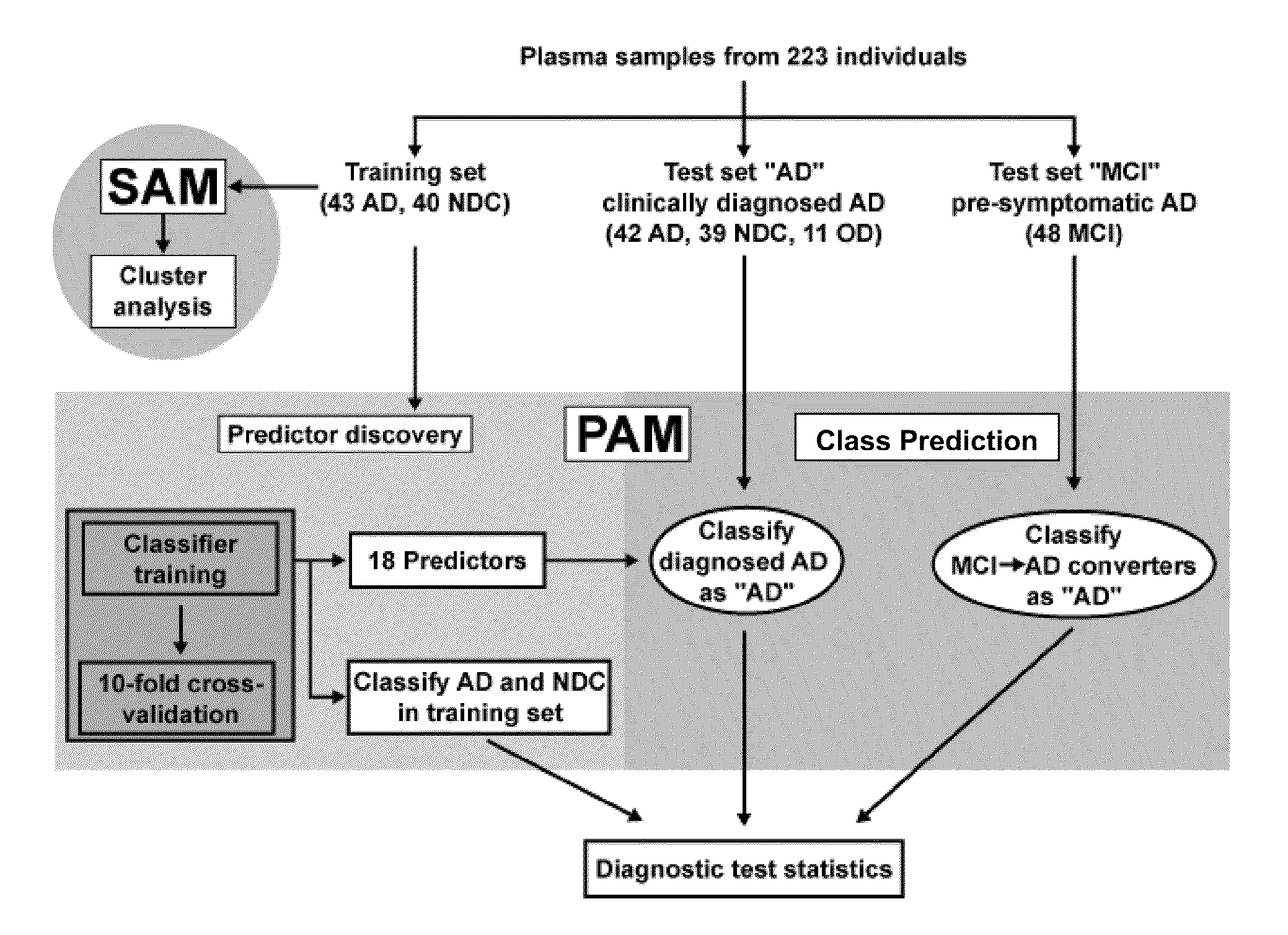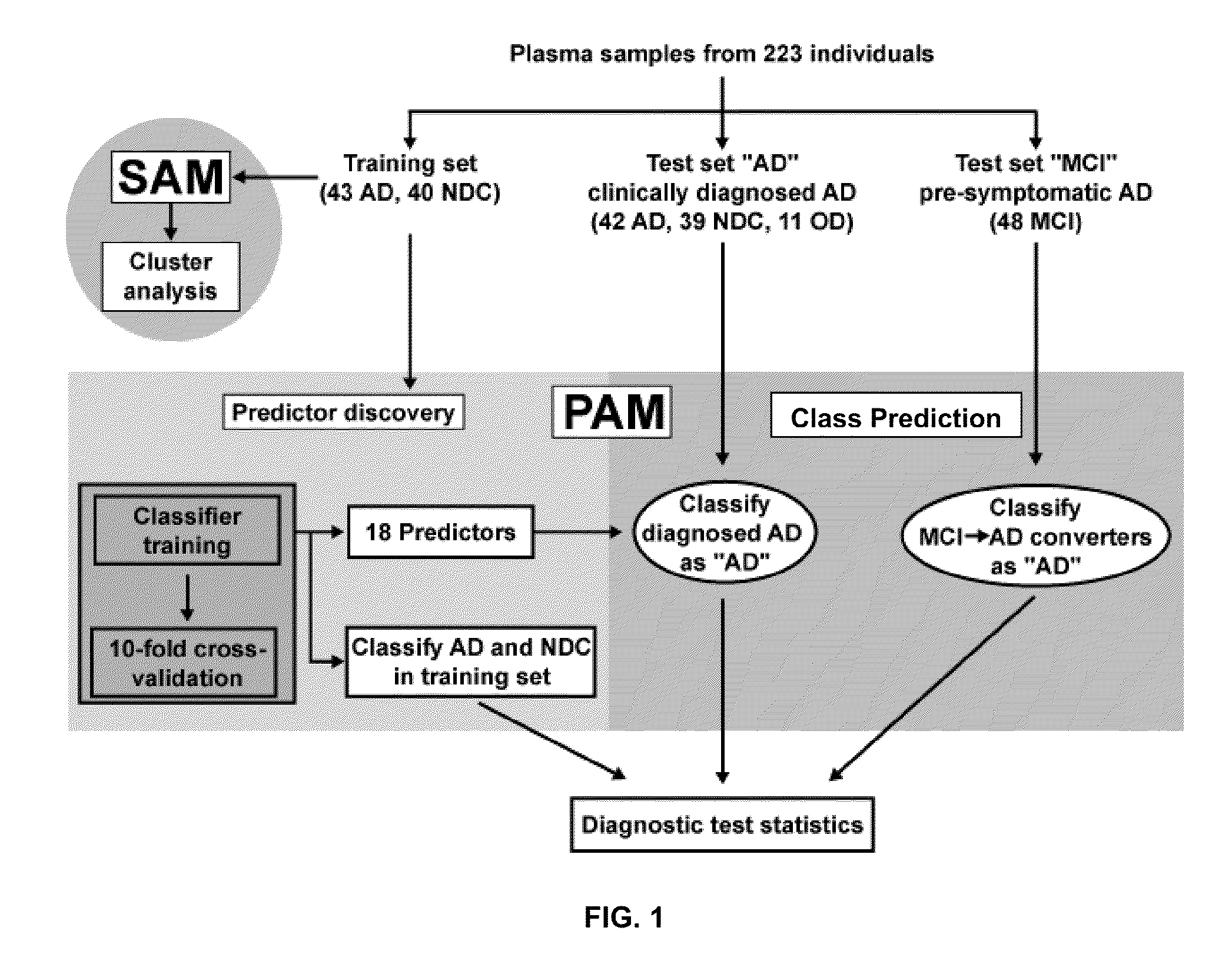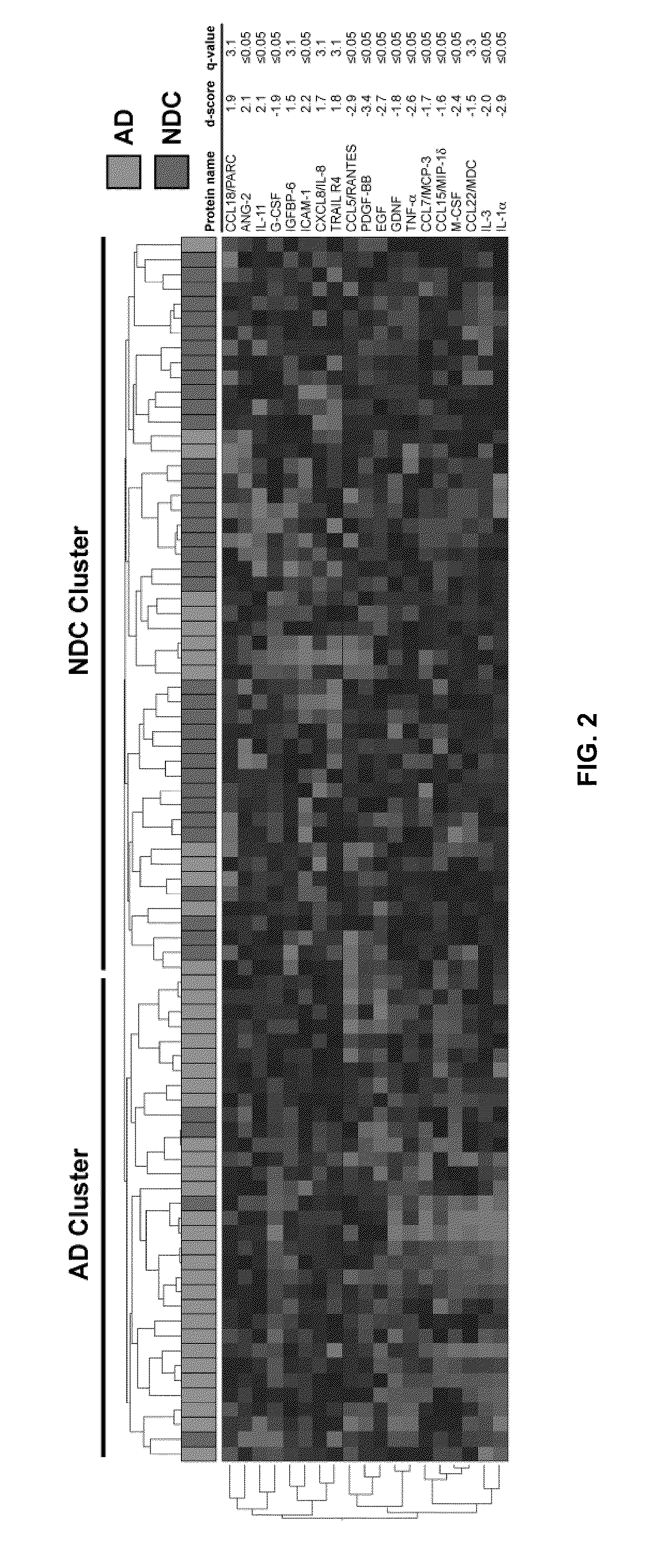Collection of biomarkers for diagnosis and monitoring of alzheimer's disease in body fluids
a biomarker and alzheimer's disease technology, applied in the field of collection of biomarkers for diagnosis and monitoring of alzheimer's disease in body fluids, can solve the problems of increasing automatic phrases and clichés, inability to adequately incorporate new information into memory, and difficulty in naming everyday objects
- Summary
- Abstract
- Description
- Claims
- Application Information
AI Technical Summary
Benefits of technology
Problems solved by technology
Method used
Image
Examples
example 1
[0163]The following Example was published in Nature Medicine 13, 1359-1362 (2007), with an online publication date of Oct. 14, 2007, and which is herein incorporated by reference in its entirety.
[0164]Molecular classification and class prediction of Alzheimer's disease based on secreted signaling proteins in plasma
ABSTRACT
[0165]Alzheimer's disease (AD) is a fatal dementia affecting one in eight people at age 65. Early diagnosis is urgently needed to effectively treat patients and to develop new therapies. Using antibody-based filter arrays and a shrunken centroid-based algorithm we demonstrate that relative concentrations of 18 signaling proteins in plasma allow for classification of blinded samples from AD patients and controls with 90% sensitivity and 88% specificity. More importantly, the same proteins and algorithm also classified as AD blinded samples from patients with mild cognitive impairment (MCI) who progressed to AD 2-6 years later (91% sensitivity) against samples from p...
example 2
[0276]Further benefit from the findings of the filter array studies (18 predictive markers) would be realized if the assay were converted to a quantitative or semi-quantitative assay platform that is amenable to high sample throughput. SearchLight is a highly sensitive multiplex ELISA system utilizing a chemiluminescent signal readout. This platform was selected for initial evaluation since 16 of the 18 protein markers identified as predictive from the filter array studies were available commercially. 5 different multiplexes were generated by arraying the appropriate capture antibodies onto the wells of a microtiter plate. Multiplex configurations were based on historical data gathered by the manufacturer related to approximate sample dilution requirements and separation of individual reactions that demonstrate known undesirable interactions.
[0277]Following blocking of unreacted sites, plasma (or dilution thereof) was incubated. All samples (or various dilutions thereof) were run on...
examples 3-11
[0284]The following Examples 3-11 were published in U.S. patent application Ser. Nos. 11 / 148,595, filed Jun. 8, 2005, and 11 / 580,405, filed Oct. 13, 2006, both of which are incorporated by reference herein in their entireties.
PUM
| Property | Measurement | Unit |
|---|---|---|
| time | aaaaa | aaaaa |
| stress | aaaaa | aaaaa |
| heat map | aaaaa | aaaaa |
Abstract
Description
Claims
Application Information
 Login to View More
Login to View More - R&D
- Intellectual Property
- Life Sciences
- Materials
- Tech Scout
- Unparalleled Data Quality
- Higher Quality Content
- 60% Fewer Hallucinations
Browse by: Latest US Patents, China's latest patents, Technical Efficacy Thesaurus, Application Domain, Technology Topic, Popular Technical Reports.
© 2025 PatSnap. All rights reserved.Legal|Privacy policy|Modern Slavery Act Transparency Statement|Sitemap|About US| Contact US: help@patsnap.com



